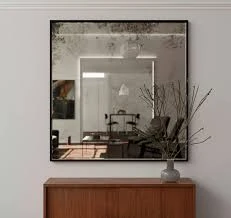

The Art of Float Annealed Glass A Timeless Innovation
Float annealed glass has become a cornerstone in modern architectural design and functional applications, celebrated for its clarity, durability, and versatility. As an extension of the glass manufacturing process, float glass is produced by floating molten glass on top of molten tin, creating a uniformly thick, flat surface. The term “annealed” refers to the controlled cooling process that follows, which relieves internal stresses in the glass, enhancing its stability and strength.
The invention of float glass dates back to the mid-20th century, marking a revolutionary shift in glass production. Prior to this innovation, glass was produced through more labor-intensive methods that often resulted in imperfections, making it less suitable for wide-scale applications in construction and design. Float glass introduced a level of consistency and quality that transformed the industry, allowing for larger sheets of glass that retained optical clarity and structural integrity.
One of the key advantages of float annealed glass is its exceptional transparency. The manufacturing process eliminates distortions and inconsistencies, enabling a clear line of sight through the glass. This attribute makes float annealed glass an ideal choice for windows, facades, and skylights, allowing natural light to flood interior spaces while providing a seamless connection with the outside world. Architects and designers appreciate its aesthetic qualities, as well as its ability to enhance the overall appearance of a building.
Moreover, float annealed glass can be easily processed and customized to meet specific design requirements
. It can be cut, shaped, and treated to create various products, from simple panes to intricate designs. This flexibility extends to its ability to be coated or laminated, allowing for applications that enhance energy efficiency, privacy, or safety. For instance, reflective coatings can be applied to float glass to improve thermal insulation, reducing energy consumption in buildings.
Safety is another critical consideration in glass selection, and float annealed glass can be engineered to meet rigorous safety standards. While standard float glass can shatter into sharp shards upon impact, advancements in glass technology have led to the development of tempered and laminated variants. Tempered glass undergoes a special heating and cooling process that increases its strength, making it much more resistant to breaking. Laminated glass, on the other hand, consists of layers bonded together with a durable interlayer, which holds the glass in place even when shattered, minimizing the risk of injury.
Sustainability is becoming an increasingly crucial factor in material selection for construction projects. Float annealed glass aligns well with green building initiatives as it can be manufactured from recycled glass and is fully recyclable at the end of its life cycle. Its energy-efficient properties can significantly reduce heating and cooling costs, contributing to the sustainability of the built environment.
In addition to its architectural applications, float annealed glass is also prevalent in various household items, including shower enclosures, table tops, and decorative partitions. Its versatility caters to both functional requirements and aesthetic preferences, showcasing its importance in everyday life.
In conclusion, float annealed glass stands as a testament to human ingenuity and the desire for innovation in material science. Its unique combination of clarity, strength, and adaptability has played a pivotal role in shaping modern architecture and design. As demand for sustainable and energy-efficient building materials continues to rise, float annealed glass will undoubtedly remain a favored choice, cementing its place in the future of our built environment.